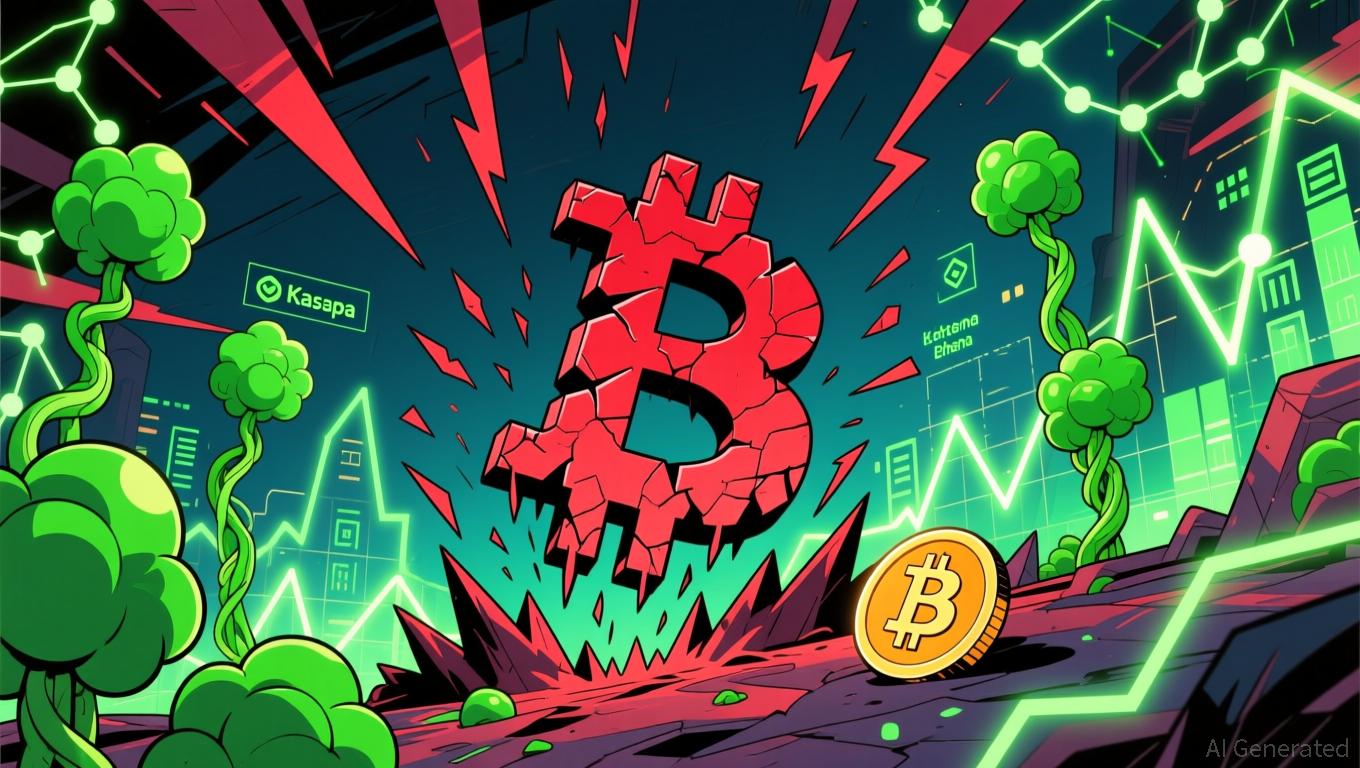Investing in Educational Facilities: The Overlooked Driver of Sustainable Economic Expansion
- Education infrastructure emerges as a high-impact, undervalued investment, addressing social inequities while driving measurable economic growth through workforce readiness and GDP gains. - U.S. student-counselor ratios (385:1) highlight systemic underfunding, with improved access correlating to 90% graduation rates and long-term economic benefits like reduced social service reliance. - EdTech's $146B→$549.6B market growth (2023–2033) and AI-driven innovations position it as a core infrastructure subset,
The Strain on Student Support and Its Broader Economic Effects
In the United States, the ratio of students to school counselors remains a significant concern, with
The benefits of investing in school counseling go beyond just graduation statistics.

EdTech: A Rapidly Expanding Segment of Education Infrastructure
Educational technology, or EdTech, has become a fundamental part of today’s infrastructure, with the worldwide market
Those interested in tapping into this growth may look at the Global X Education ETF (EDUT), which follows companies engaged in digital education and content. Although EDUT does not directly invest in grant-based initiatives, its emphasis on scalable EdTech aligns with major policy directions, such as the
Investing Through Policy: Grants and Infrastructure Funds
Government policies at both federal and state levels are transforming the landscape of education infrastructure, opening doors for investors interested in public-private collaborations. The Education Innovation and Research (EIR) program, for example,
For those seeking indirect access to global education markets, policy-driven options like the Global Partnership for Education (GPE) are available. GPE is aiming to raise $5 billion for 2021–2025 to enhance education in low-income nations, leveraging both domestic resources and private-sector involvement. In the U.S., state-level efforts—such as Tennessee’s initiative to align academic programs with labor market needs—demonstrate the potential of regional education infrastructure funds.
Why Education Infrastructure Is a Smart Long-Term Bet
The attractiveness of education infrastructure lies in its ability to both reduce social disparities and generate financial gains. For instance, the One Big Beautiful Bill Act (OBBB) connects school counseling with workforce development by making Workforce Pell Grants available for vocational education. This approach not only improves student success but also helps build a skilled workforce, directly contributing to higher productivity and economic output.
Additionally, the increasing involvement of private equity in education highlights the sector’s durability. With the global education industry
Conclusion: Education Infrastructure as a Strategic Investment Priority
Education infrastructure represents more than just a social initiative—it serves as a driver of economic advancement. By supporting the expansion of school counseling, fostering EdTech breakthroughs, and investing in policy-aligned funds, investors can benefit from a sector on the verge of major change. As the U.S. faces counselor shortages and the conclusion of pandemic relief, and as the global need for skilled workers intensifies, education infrastructure stands out for its unique combination of social impact and financial opportunity. For proactive investors, the potential rewards are significant—and the moment to act is now.
Disclaimer: The content of this article solely reflects the author's opinion and does not represent the platform in any capacity. This article is not intended to serve as a reference for making investment decisions.
You may also like
Ethereum Updates Today: Privacy First: Buterin Backs Messaging’s Fundamental Transformation
- Vitalik Buterin donates 128 ETH ($390K) to Session and SimpleX to advance metadata privacy and permissionless design. - Platforms use decentralized infrastructure and cryptographic IDs to protect communication metadata, resisting censorship and AI surveillance risks. - Donation counters regulatory threats like EU's Chat Control while promoting privacy-focused innovation in encrypted communication. - Experts emphasize permissionless account creation as critical for digital freedom, despite trade-offs like

Bitcoin News Update: Growing Optimism Faces ETF Withdrawals: The Delicate Balance of Crypto Stability
- Crypto markets show fragile stabilization as Fear & Greed Index rises to 20, but Bitcoin remains 30% below October peaks amid $3.5B ETF outflows. - Stablecoin market cap drops $4.6B and on-chain volumes fall below $25B/day, weakening Bitcoin's liquidity absorption capacity. - Select altcoins like Kaspa (22%) and Ethena (16%) gain traction while BlackRock's IBIT returns $3.2B profits, signaling mixed institutional confidence. - Technical indicators suggest tentative support at $100,937 for Bitcoin, but So

BCH Rises 0.09% as Momentum Fuels Outperformance
- BCH rose 0.09% in 24 hours but fell 4.22% in seven days, yet gained 22.72% annually. - It outperformed its Zacks Banks - Foreign sector with 0.66% weekly gains vs. -2.46% industry decline. - Earnings estimates rose twice in two months, boosting consensus from $2.54 to $2.56. - With a Zacks Rank #2 (Buy) and Momentum Score B, BCH shows strong momentum potential. - Annual 63.46% gains and positive revisions solidify its position as a top momentum stock.

DOGE drops 1.36% as Bitwise ETF debuts
- Bitwise launched the first Dogecoin ETF (BWOW) on NYSE, offering institutional-grade exposure to the memecoin. - DOGE fell 1.36% in 24 hours but rose 7.34% weekly, reflecting mixed short-term market sentiment. - The ETF aligns with growing institutional adoption and regulatory momentum for altcoins, despite a 52.35% annual decline. - Similar products like Bonk’s ETP and Ethereum upgrades highlight maturing crypto infrastructure and investor demand.
